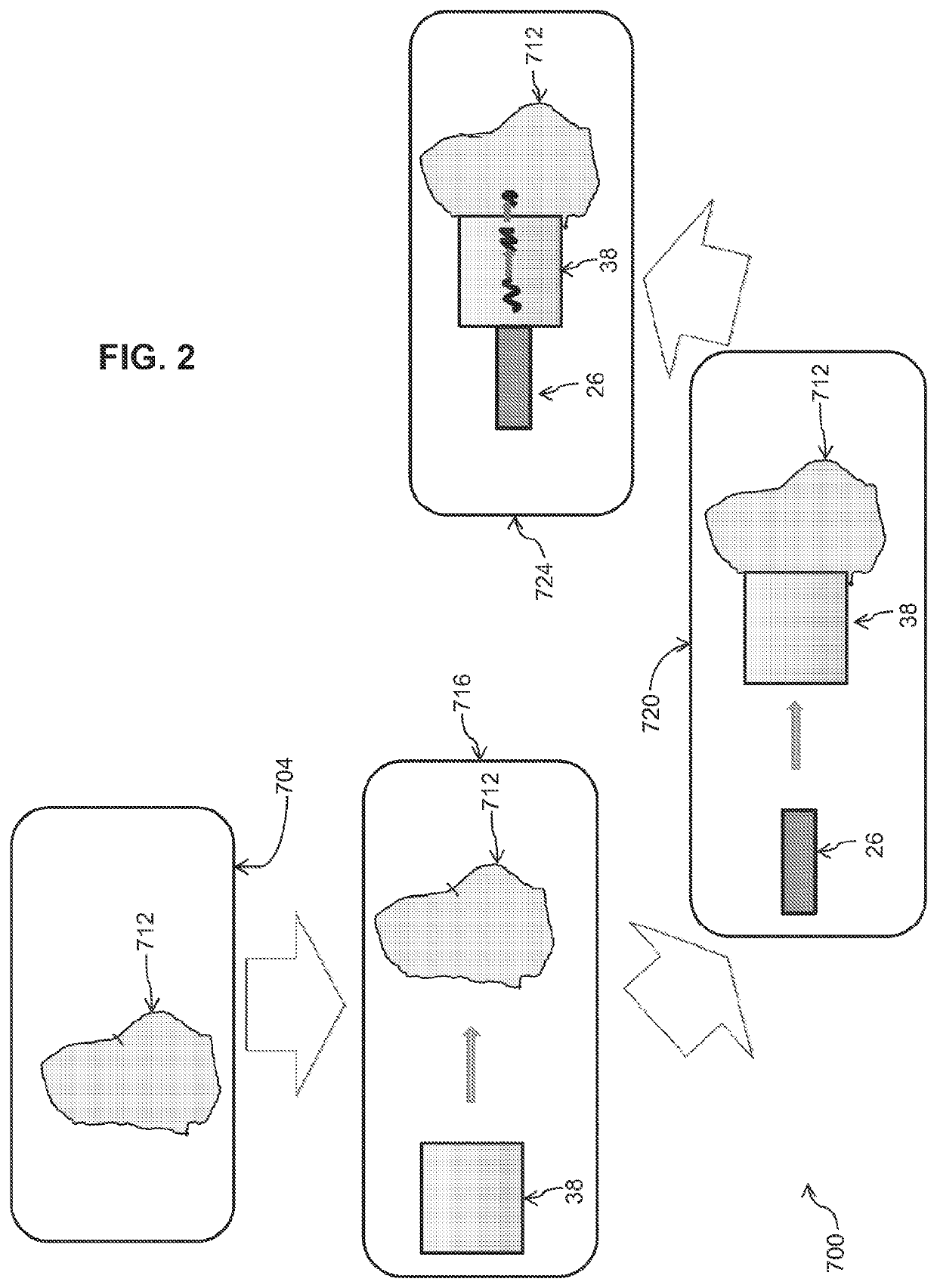Methods of treating cellulite and subcutaneous adipose tissue
a cellulite and subcutaneous adipose tissue technology, applied in the field of cellulite and subcutaneous adipose tissue treatment, can solve the problems of non-adipose cells and tissues being damaged, side effects typically subside, application of these technologies is likely to have potential safety issues, etc., to reduce undesired side effects, reduce the volume of subcutaneous adipose tissue, and reduce the appearance of cellulite
- Summary
- Abstract
- Description
- Claims
- Application Information
AI Technical Summary
Benefits of technology
Problems solved by technology
Method used
Image
Examples
example 1
[0095]A study was undertaken to evaluate the induction of inflammation in subcutaneous fat using high-frequency shockwave. A Gottingen minipig (˜30 Kg) was anesthetized. The mid-ventral sites were prepared by removing the skin hair here using hair clippers and then razor. High-frequency shockwaves were then applied to the two treatment sites. Following the high frequency shockwave treatment, and 48 hours post treatment, biopsies were taken of treatment sites using 3 mm circular punch biopsy instruments. Tissue samples were placed in buffered formalin for microscopic examination.
[0096]The high frequency shockwave treatment protocols are shown in Table 1. The probe had a 30 mm diameter shockwave outlet window and was configured to generate electrohydraulic shockwaves. All five sites that were treated using different high frequency shockwave settings demonstrated inflammation in the subcutaneous fat. No evidence of cavitation or thermal damage was noted on an...
example 2
[0099]A study was undertaken to evaluate subcutaneous volume loss following treatment with high frequency shockwaves. A Gottingen minipig (˜30 Kg) was prepared as described in Example 1. Two separate test sites (1.7, 1.8) were treated using high-frequency shockwaves (9.2j / p, 25 Hz, 240 seconds). The probe had a 30 mm diameter shockwave outlet window and was configured to generate electrohydraulic shockwaves.
[0100]Two weeks following the high frequency shockwave treatment, the amount of post-treatment volume change was assessed utilizing a Canfield Scientific Vectra three-dimensional camera and software. Volumetric pictures of the test sites (1.7, 1.8) were compared to adjacent control sites (Sites 1.9, 1.10). A loss of volume was indicated from the treated sites (1.7, 1.8). Furthermore, the skin for both test sites demonstrated discoloration of the overlying skin. This is consistent with the appearance skin overlying panniculitis. Thus, the discoloration li...
example 3
Lipid Crystallization
[0101]A study was performed to demonstrate that non-cavitating, non-thermal, high intensity shockwaves when applied to adipose tissue results in the crystallization of the adipocyte lipids. A Gottingen Minipig (˜30 Kg) was prepared as described in Example 1. Site 1.8 after treatment described in Example 2 was measured immediately following the high frequency shockwave treatment. A biopsy was taken of the subcutaneous fat at the treated site. For comparison, a biopsy was taken at a non-treated site. Samples of the biopsied tissues were stored in saline and then prepared for cross-polarized light microscopic examination to see if evidence of crystal nucleation had occurred. To aid in visualizing crystal nucleation, tissue samples were cooled to allow crystal growth at the crystal nucleation sites.
[0102]Both samples were heated to 45C, and then cooled to 0C for 45 minutes. The treated adipose sample had a luminosity of 34 compared to the control adipose sample's lu...
PUM
 Login to View More
Login to View More Abstract
Description
Claims
Application Information
 Login to View More
Login to View More - R&D
- Intellectual Property
- Life Sciences
- Materials
- Tech Scout
- Unparalleled Data Quality
- Higher Quality Content
- 60% Fewer Hallucinations
Browse by: Latest US Patents, China's latest patents, Technical Efficacy Thesaurus, Application Domain, Technology Topic, Popular Technical Reports.
© 2025 PatSnap. All rights reserved.Legal|Privacy policy|Modern Slavery Act Transparency Statement|Sitemap|About US| Contact US: help@patsnap.com



